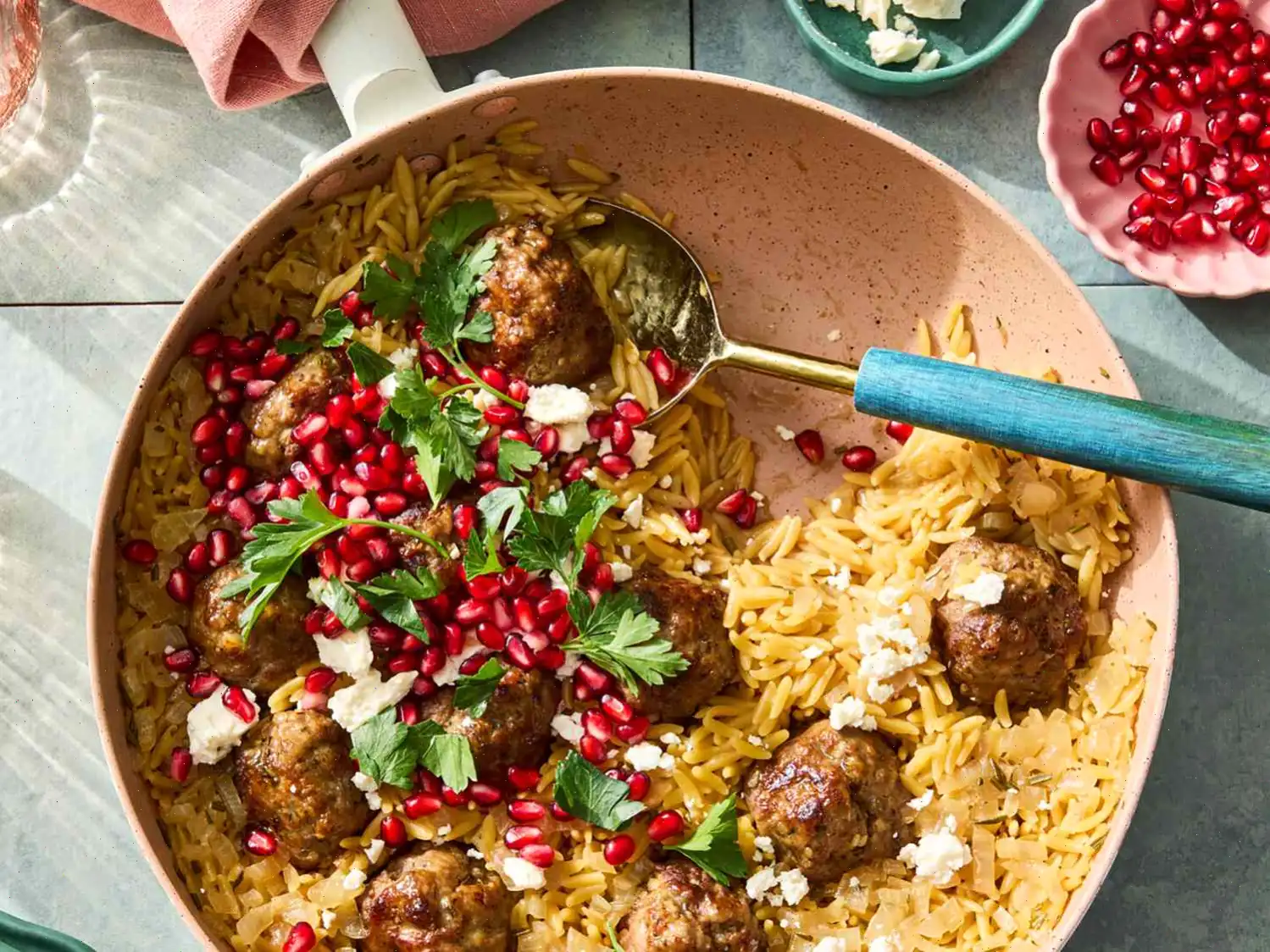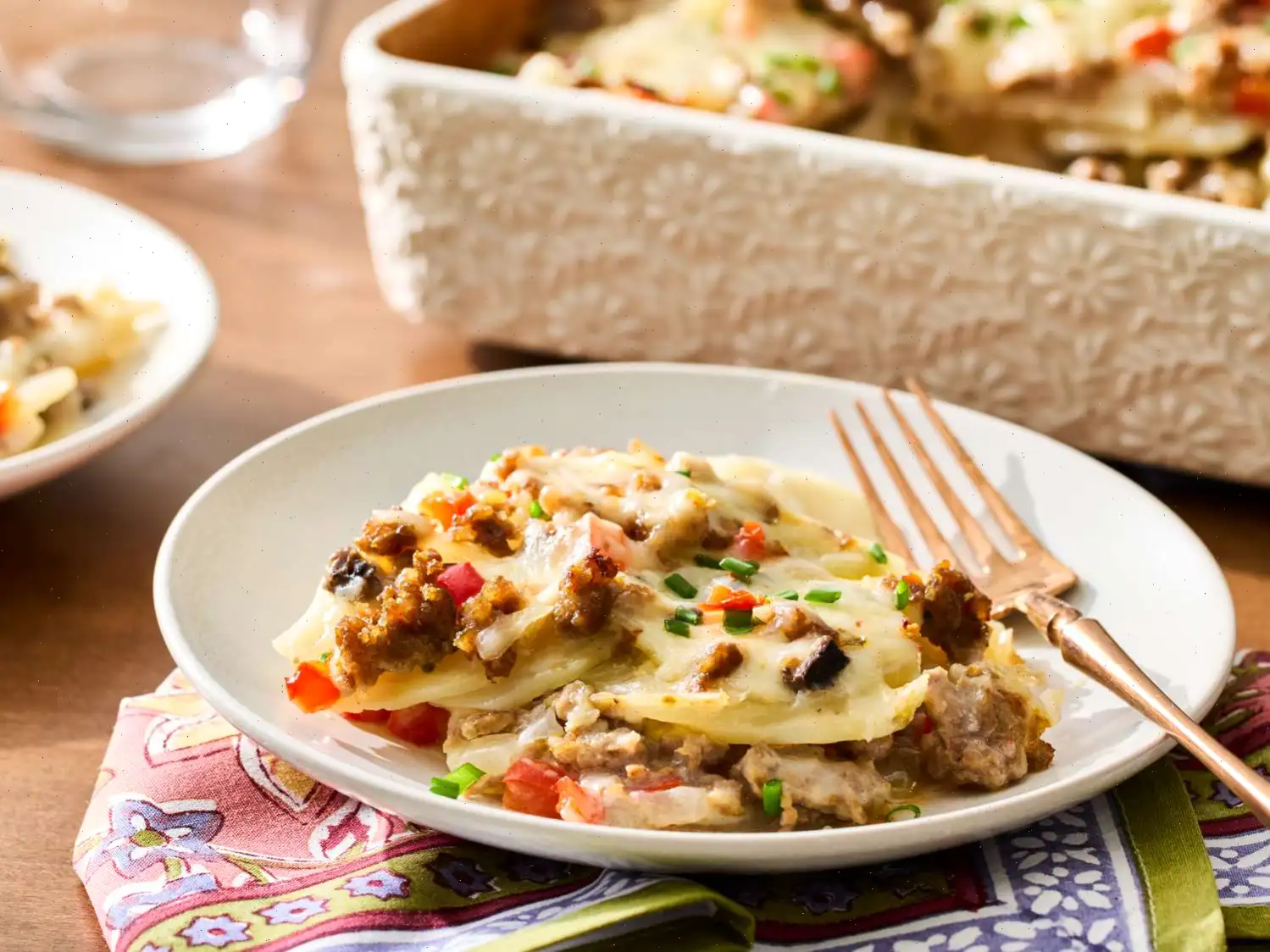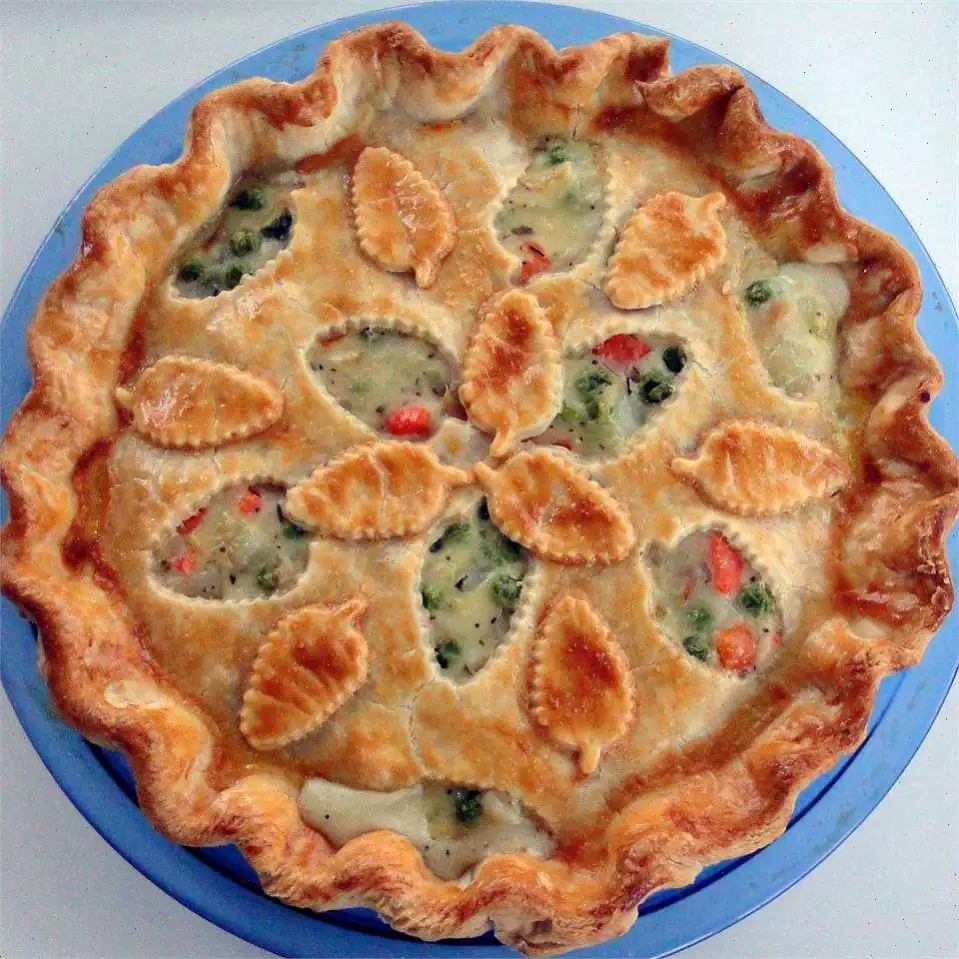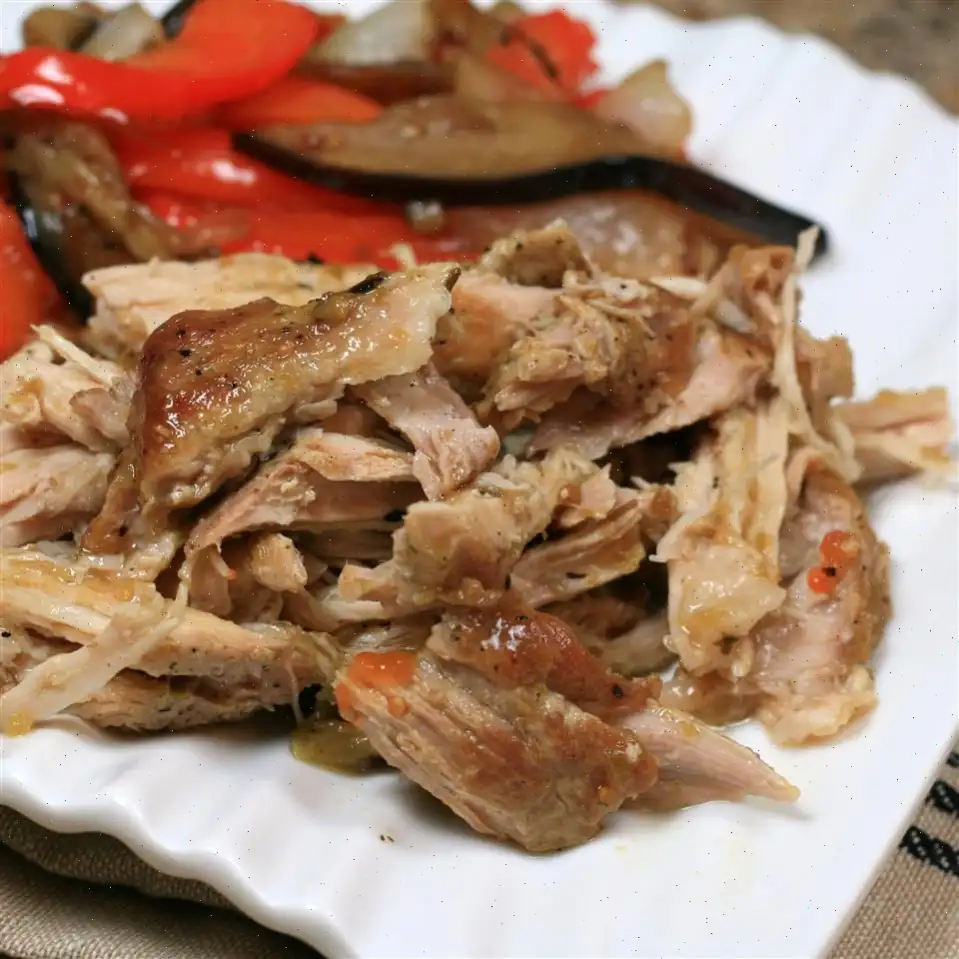
Skillet Lamb Meatballs with Orzo Pilaf Recipe
Meatballs with Orzo and Feta
A savory dish featuring tender lamb meatballs, cooked with orzo pasta, topped with crumbled feta, pomegranate arils, and a sprinkle of fresh parsley. Perfect for a hearty meal that's both flavorful and satisfying.
Ingredients
- 1/2 cup fine dried bread crumbs
- 1 large egg, lightly beaten
- 3 cloves garlic, minced
- 2 tablespoons za'atar spice mix
- 1/2 teaspoon salt
- 1/4 teaspoon freshly ground black pepper
- 1 pound ground lamb or 85% lean ground beef
- 1 tablespoon olive oil
- 1 small onion, chopped
- 3 cups 50% less sodium beef broth or low-sodium chicken broth
- 1 1/2 cups orzo pasta
- 1 teaspoon finely chopped fresh rosemary or 1/2 teaspoon dried rosemary, crushed
- 1/4 cup crumbled feta cheese
- 2 tablespoons pomegranate arils
- Chopped fresh parsley, for garnish
- 1/4 cup toasted pepitas, for garnish
Directions
- In a medium bowl, combine the bread crumbs, beaten egg, minced garlic, za'atar, salt, and pepper. Stir well to combine.
- Add the ground lamb to the mixture, and gently mix it with clean hands until evenly combined. Shape the mixture into 16 meatballs, each about 1 1/2 inches in diameter.
- Heat olive oil in a large skillet over medium-high heat. Add the meatballs and cook, turning occasionally, until they are browned on all sides (about 6 to 8 minutes). Transfer the meatballs to a plate and cover to keep warm.
- Pour off any excess grease from the skillet, leaving just 1 tablespoon of drippings. Add the chopped onion to the skillet and cook, stirring occasionally, until softened (about 2 minutes).
- Pour the broth into the skillet, using a wooden spoon or spatula to scrape up any browned bits from the bottom of the pan. Bring the broth to a boil over high heat.
- Stir in the orzo pasta and rosemary, then return the meatballs to the skillet. Reduce the heat to medium-low and cover. Simmer for 9 to 10 minutes, or until the pasta is al dente and an instant-read thermometer inserted into the center of the meatballs reads 165F (74C).
- If there is any excess liquid, let the dish stand for 5 minutes before serving. Top with crumbled feta cheese and pomegranate arils, and garnish with fresh parsley and toasted pepitas.
Nutrition Facts
Per Serving (1/4 of recipe)
- Calories: 949
- Total Fat: 36g (46% Daily Value)
- Saturated Fat: 13g (63% Daily Value)
- Cholesterol: 165mg (55% Daily Value)
- Sodium: 783mg (34% Daily Value)
- Total Carbohydrates: 103g (37% Daily Value)
- Dietary Fiber: 6g (21% Daily Value)
- Total Sugars: 6g
- Protein: 52g (103% Daily Value)
- Vitamin C: 4mg (4% Daily Value)
- Calcium: 162mg (12% Daily Value)
- Iron: 8mg (46% Daily Value)
- Potassium: 844mg (18% Daily Value)
Percent Daily Values are based on a 2,000 calorie diet. Your daily values may be higher or lower depending on your calorie needs. Nutritional information is not available for all ingredients, and some values are based on available data.
History and Origins of Skillet Lamb Meatballs with Orzo Pilaf
Skillet lamb meatballs with orzo pilaf trace their roots to the culinary traditions of the Eastern Mediterranean, particularly the Levantine and Greek regions. Lamb has been a staple protein in these areas for centuries, prized for its rich flavor and adaptability in spiced dishes. Orzo, a rice-shaped pasta, emerged in Mediterranean kitchens as a versatile accompaniment to meats and vegetables. Combining spiced lamb meatballs with tender orzo represents a modern interpretation of classic home-cooked meals that have been passed down through generations.
Regional Characteristics
This dish reflects regional flavors from the Middle East and Greece. The use of zaatara blend of thyme, sesame seeds, sumac, and other herbsis particularly emblematic of Levantine cuisine, offering a fragrant, earthy flavor profile. Feta cheese and pomegranate arils provide a balance of creaminess and tartness, reminiscent of Greek culinary influences. In some variations, fresh herbs such as rosemary and parsley are incorporated to enhance aroma and create a fresh contrast to the richness of the lamb.
Differences from Similar Dishes
While meatballs are ubiquitous in global cuisines, skillet lamb meatballs with orzo pilaf stand out for their use of Middle Eastern spices, the combination of pasta and meat cooked in a single skillet, and the inclusion of pomegranate arils and feta. Unlike Italian meatballs typically served with tomato sauce, this dish emphasizes aromatic herbs and light broths. The orzo pilaf provides a delicate, slightly nutty texture, distinguishing it from heavier grain accompaniments such as rice or couscous.
Typical Serving Context
In the regions where this dish originated, it is often served as a family-style dinner or during festive gatherings. Restaurants specializing in Mediterranean or Middle Eastern cuisine may feature it as a main course, accompanied by fresh salads, flatbreads, and mezze. It is also popular for casual weeknight meals due to its one-skillet preparation, offering both convenience and elegance in presentation.
Interesting Facts
- Zaatar, one of the key spices in this recipe, has been used since ancient times in the Middle East for both culinary and medicinal purposes.
- The combination of lamb and pomegranate is symbolic in some cultures, representing prosperity and abundance during celebrations.
- Cooking the meatballs and orzo together in the same skillet allows the pasta to absorb the rich flavors of the lamb and spices, enhancing the overall depth of the dish.
- Orzo, despite resembling rice, is actually a pasta, and its inclusion in pilafs demonstrates the fusion of Mediterranean and Middle Eastern culinary techniques.
FAQ about Skillet Lamb Meatballs with Orzo Pilaf Recipe
Comments
Linda Walker
03/11/2025 09:37:51 PM
All five members of my family at the table absolutely adored this dish. I had to increase the amount of meat mixture as three of the diners were men, but I kept the orzo portion the same. I had the pleasure of using fresh rosemary from my own herb garden and I ended up adding three times the amount, yet it didn't overwhelm the orzo. I decided to skip the pomegranate component of the recipe. I will definitely be making this dish again!








